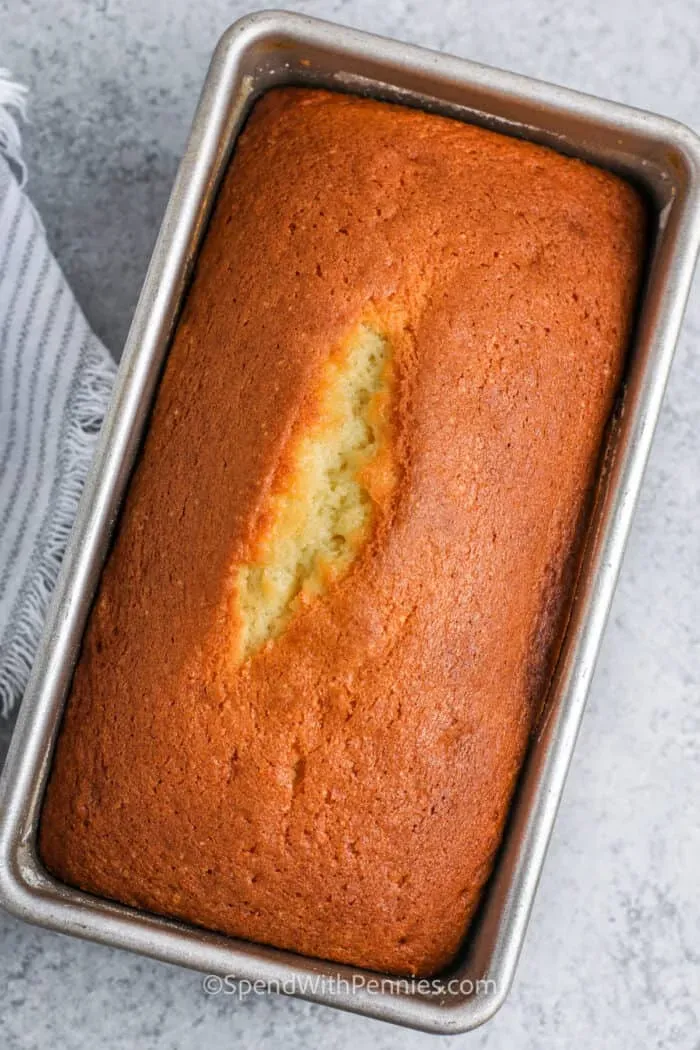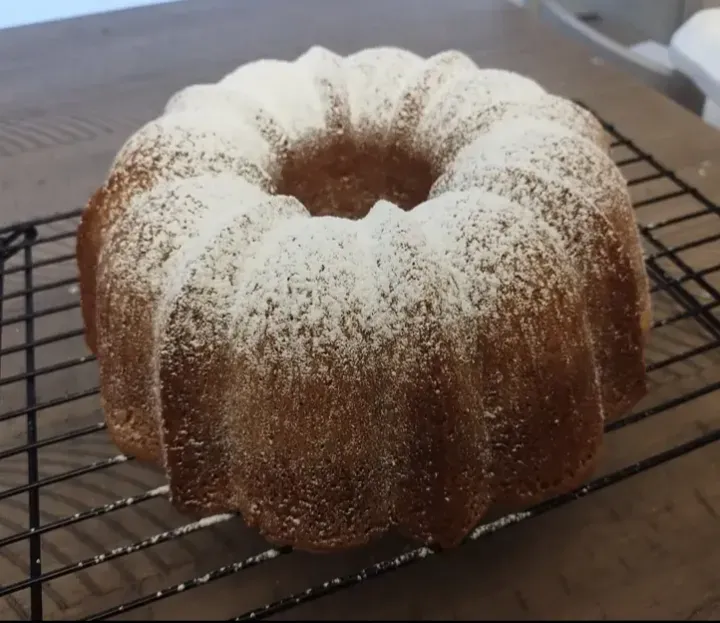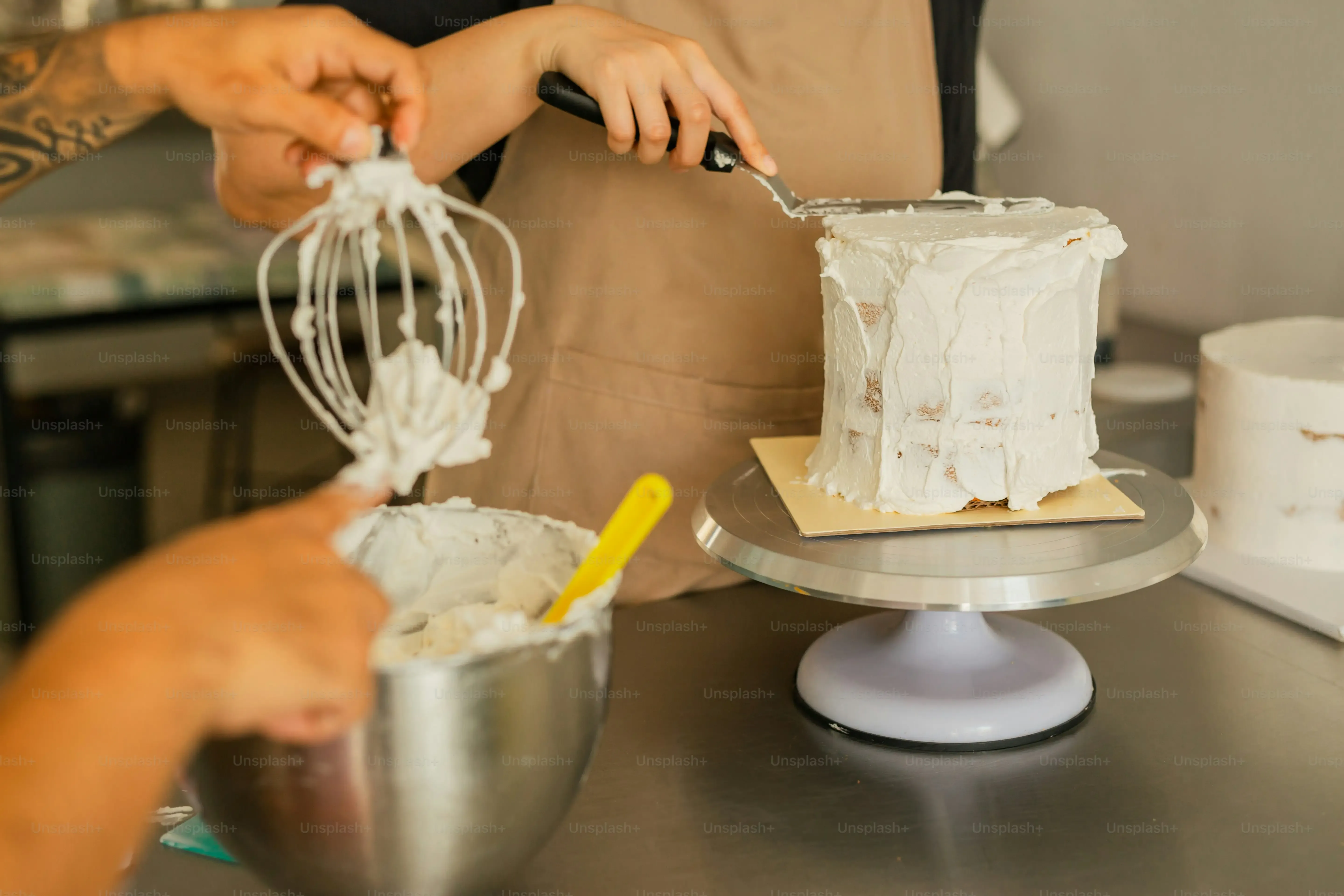Table of Contents
So, you want to bake *the* pound cake. Not just any cake that happens to be heavy, but the kind that makes people close their eyes and hum with pleasure. The secret weapon to avoiding a dry, crumbly disappointment and achieving that legendary moist, tender crumb? Sour cream. Seriously, if you've ever had a subpar pound cake, it probably lacked sufficient fat and moisture, and sour cream delivers both in spades, along with a subtle tang that perfectly cuts through the richness. It transforms a potentially dense doorstop into something truly sublime. You might think mastering how to make a sour cream pound cake is some complicated art requiring a culinary degree or your grandmother's mystical touch. It isn't. It requires quality ingredients, a bit of patience, and knowing a few critical steps. We're going to break down the process, from creaming your butter and sugar just right to understanding why ingredient temperature matters more than you think, and how to handle the batter gently so you don't end up with something tough. Consider this your straightforward, no-nonsense guide to achieving that perfect, classic sour cream pound cake slice. Let's ditch the guesswork and just bake a truly great cake.
Gathering Ingredients for Your Sour Cream Pound Cake

Gathering Ingredients for Your Sour Cream Pound Cake
Alright, before we even think about preheating the oven or pulling out the mixer, let's talk about the foundation. Making a killer sour cream pound cake starts with having the right stuff on hand, and critically, at the right temperature. You can follow the instructions perfectly, but if your butter is cold as a stone and your eggs just came from the fridge arctic zone, you're setting yourself up for failure. We need room temperature everything, folks – butter, eggs, and yes, that sour cream. This isn't some old wives' tale; it's science. Room temperature ingredients emulsify properly, creating a smooth, stable batter that bakes evenly and yields that tender crumb we're chasing. Think of it as the essential first step in how to make a sour cream pound cake that doesn't disappoint. Don't skimp on quality either; use real butter, large eggs, and full-fat sour cream. Diet sour cream has no place in a proper pound cake; we're here for richness, not regret later.
StepbyStep: How to Make a Sour Cream Pound Cake Batter

StepbyStep: How to Make a Sour Cream Pound Cake Batter
Creaming Butter and Sugar: The Foundation
Alright, mixer on standby? Good. The very first move in this StepbyStep: How to Make a Sour Cream Pound Cake Batter saga is creaming your room temperature butter and sugar. This isn't just about mixing; it's about aeration. You're essentially whipping tiny air pockets into the fat with the sugar crystals. This is what gives your cake lift and contributes significantly to that tender texture. You want to beat it on medium-high speed for a good 5-7 minutes, maybe even 8. Don't rush this. The mixture should become pale yellow, light, and fluffy, almost like a frosting that didn't quite make it to the party. Scrape down the sides of the bowl often to ensure everything gets properly incorporated. If you stop too soon, your cake will be dense and sad. Nobody wants a sad cake.
Incorporating Eggs and Vanilla: One by One
Now that your butter and sugar are looking appropriately airy and inviting, it's time to bring in the eggs. Remember those room temperature eggs we talked about? This is why. Cold eggs can seize up the creamed butter mixture, undoing all that lovely aeration you just did. Add them one at a time, beating well after each addition until it's fully incorporated before adding the next. This gradual process helps maintain that smooth emulsion. It might look a little curdled after the first egg, but keep beating; it usually smooths out as you add more. Once the eggs are in and fully blended, stir in your vanilla extract. Use good quality vanilla; it makes a difference. This stage is crucial in our StepbyStep: How to Make a Sour Cream Pound Cake Batter guide, setting the stage for the dry and wet ingredients.
- Undermixing the butter/sugar: Leads to a dense cake. Beat until light and fluffy.
- Adding cold eggs: Can curdle the batter and affect texture. Use room temperature eggs.
- Adding eggs all at once: Makes it harder to emulsify properly. Add them one at a time.
- Overmixing after adding eggs: Can develop too much gluten too early. Mix just until incorporated.
Alternating Dry and Wet: The Gentle Fold
Here's where things get a little delicate. You'll have your dry ingredients (flour, salt, maybe a pinch of leavening, depending on the recipe) and your wet ingredients (that glorious sour cream, perhaps thinned slightly with milk or extract). The technique is to alternate adding the dry and wet to your butter/sugar/egg mixture, usually starting and ending with the dry. Add about a third of the dry ingredients, mix on low speed just until *almost* combined. Then add half of the sour cream mixture, mix just until combined. Repeat with another third of the dry, the remaining sour cream, and finally the last third of the dry. The key word here is *low speed* and *just combined*. Overmixing once the flour is in develops gluten, and too much gluten means a tough cake. For a perfect StepbyStep: How to Make a Sour Cream Pound Cake Batter, stop the mixer when you still see a few streaks of flour, then finish by hand with a spatula, gently folding until everything is just incorporated. Don't be aggressive; treat the batter with respect.
Baking Tips for the Best Sour Cream Pound Cake

Baking Tips for the Best Sour Cream Pound Cake
Oven Prep and Pan Power
you've got this beautiful, carefully crafted batter. Don't mess it up in the final stages! Baking a sour cream pound cake isn't just about the ingredients and mixing; the oven is your co-pilot. First things first: preheat that oven properly. Give it at least 15-20 minutes *after* it says it's reached temperature. Oven thermostats can lie, and an accurately heated oven ensures even baking. If your oven runs hot or cold, use an oven thermometer. Seriously, they're cheap and invaluable. Next, the pan. A standard loaf pan or a tube pan works best for pound cake. Generously grease and flour it. Like, really get into the corners and up the sides. Nothing is more frustrating than a perfect cake that sticks. Some folks use baking spray with flour, which is fine, but good old butter and flour is reliable. Distribute the batter evenly in the pan, maybe even give it a gentle tap on the counter to settle it and remove large air bubbles. For a tube pan, smooth the top, and for a loaf pan, you might create a slight mound in the center; this helps it rise evenly and prevents that dreaded crack from getting too wild.
Baking Time and Checking for Doneness
Now, the waiting game begins. Pop that prepped pan into the preheated oven. Baking time for a sour cream pound cake can vary quite a bit depending on your oven, the pan size, and even the humidity. A loaf pan might take 60-80 minutes, while a tube pan could be 75-90 minutes or more. Don't just trust the timer; trust your instincts and a cake tester. The cake is done when a long skewer or toothpick inserted into the deepest part comes out with just a few moist crumbs attached, or clean. If it comes out with wet batter, it needs more time. If it comes out bone dry, you've likely overbaked it. If the top is browning too quickly before the inside is done, you can loosely tent it with aluminum foil. Once it's out of the oven, let it cool in the pan on a wire rack for about 10-15 minutes before attempting to invert it. This allows the cake to set slightly and makes it much easier to release without breaking. Trying to unmold it too soon is a recipe for disaster, turning your beautiful how to make a sour cream pound cake success into a crumbly mess.
Problem | Possible Cause | Fix/Prevention |
|---|---|---|
Cake is dense | Undermixed butter/sugar, overmixed flour, cold ingredients | Cream butter/sugar longer, mix flour gently, use room temp ingredients |
Cake cracks excessively | Oven too hot, batter mounded too high in loaf pan | Check oven temp, level batter more evenly |
Cake sticks to pan | Pan not greased/floured properly | Grease and flour generously, get into corners |
Cake is dry | Overbaked, not enough fat/moisture (sour cream!) | Check for doneness earlier, ensure you used full-fat sour cream |
Serving and Variations for Your Pound Cake

Serving and Variations for Your Pound Cake
Simple Serving, Serious Impact
you've successfully navigated how to make a sour cream pound cake, pulled it from the oven, let it cool (mostly), and now comes the best part: eating it. A classic pound cake like this is fantastic on its own, sliced thick, maybe with a cup of coffee or tea. The richness stands up beautifully without any adornment. But if you want to elevate it, simple is still key. A dusting of powdered sugar is elegant and easy. Fresh berries – strawberries, blueberries, raspberries – are a natural pairing, their slight tartness a perfect counterpoint to the cake's sweetness and density. A dollop of lightly sweetened whipped cream? Absolute heaven. Or, if you're feeling slightly more ambitious, a simple fruit compote, perhaps warmed, spooned over a slice. Don't overthink it; the cake is the star here. Let its moist, buttery crumb shine.
Mix-Ins and Flavor Twists
While the classic sour cream pound cake is a thing of beauty, there's no rule saying you can't play around a bit once you've nailed the basic how to make a sour cream pound cake technique. You can fold in a cup or two of fresh blueberries or raspberries into the batter just before baking (toss them in a little flour first to prevent sinking). Citrus zest is another fantastic addition; lemon, orange, or lime zest brightens the flavor considerably. A teaspoon of almond extract can add another layer of complexity alongside the vanilla. For a bit of crunch and nutty flavor, chopped pecans or walnuts can be folded in. Just remember not to overload the batter with additions; you still want that core pound cake texture to come through. Start small, maybe one addition at a time, to see how it affects the final result.
- Add 1-2 cups of fresh berries (tossed in flour) for a fruity twist.
- Mix in 1-2 tablespoons of citrus zest (lemon, orange) for brightness.
- Substitute half the vanilla extract with almond extract for a nutty note.
- Fold in 1 cup of chopped nuts (pecans, walnuts) for crunch.
- Swirl in some chocolate chips or a ribbon of jam for added flavor pockets.
Troubleshooting and Storing Your Sour Cream Pound Cake

Troubleshooting and Storing Your Sour Cream Pound Cake
so you've successfully navigated how to make a sour cream pound cake, it smells amazing, it looks right, but what if it didn't go *exactly* as planned? Or maybe it was perfect, and now you need to make sure it stays that way. Troubleshooting and Storing Your Sour Cream Pound Cake are the final frontiers. Did it sink in the middle? Could be your leavening is old, you opened the oven door too soon, or you overmixed the batter, developing too much gluten that collapsed. Is it dry? You probably overbaked it – ovens lie, remember? Or maybe you didn't use full-fat sour cream (I warned you!). For storage, let the cake cool completely on a wire rack. Trying to wrap a warm cake traps steam and makes it gummy or soggy. Once cool, wrap it tightly in plastic wrap, then aluminum foil. This double layer is your best friend against drying out. A properly wrapped pound cake will last several days at room temperature. If you need it to last longer, slice it first (makes thawing easier), wrap the slices individually or the whole cake as described, and pop it in the freezer. It freezes beautifully for a couple of months. Thaw at room temperature; don't microwave unless you want rubber.
Your Perfect Pound Cake Awaits
There you have it. The path to a genuinely good sour cream pound cake isn't paved with complexity, but rather with careful steps and quality ingredients. Getting the creaming right, adding the eggs one at a time, and gently incorporating the dry and wet ingredients are the pillars. Sour cream isn't just an addition; it's the element that ensures moisture and that signature texture. It’s not magic; it's chemistry and technique. Follow these guidelines, and you'll consistently produce a cake that's rich, moist, and satisfying – a far cry from the dry disappointments some folks settle for. It's worth the effort for that perfect slice.